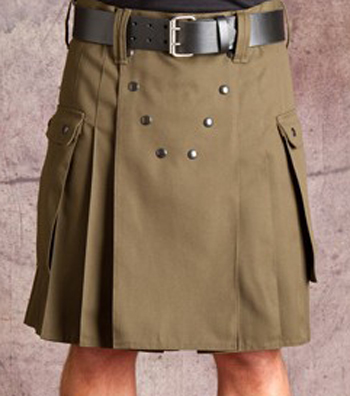"Bifurcation" in the context of clothing refers to pants which separately covers each leg and so are referred to as "bifurcated clothing"; while clothing that covers both legs as an unseparated garment; such as, a skirt, is called unbifurcated clothing.
A movement known as MUG, or "Male Unbifurcated Garments" claims that unbifurcated clothing is more comfortable and more compatible with the male anatomy than pants are; and so, there should also be unbifurcated garments that are designed and intended specifically for men.
As some MUG believers say, "The unbifurcated clothing means that one's whole lower body goes into one big, breezy, comfortable space instead of the confinement that exists with the lack of breathing space reserved for legs in traditional men's lower-body garments; also known as, trousers or pants."
Those influenced by the MUG movement also believe that just as the highlanders of Scotland, the citizens of Ancient Rome and the city-states of old Greece, as well as the men of Indonesia, Polynesia, parts of Africa, and in other places; show that men have always worn and continue to wear more unbifurcated garments than "bifurcated" styles.
Several examples of unbifurcated clothing include, kilts, sarongs (a large sheet of fabric, often wrapped around the waist and worn as a skirt by men and women throughout much of south Asia and southeast Asia, parts of Africa, and on many Pacific islands), lavalavas (short for Samoan ʻie lavalava or "cloth that wraps around"), tunics, lungis (Bengali for a garment worn around the waist in India, Bangladesh, Sri Lanka, and Myanmar), kangas (Swahili for a colorful garment similar to kitenge or a sarong), togas, etc.
The links below will present significant amounts of information and many examples of unbifurcated clothing for your knowledge and pleasure!

